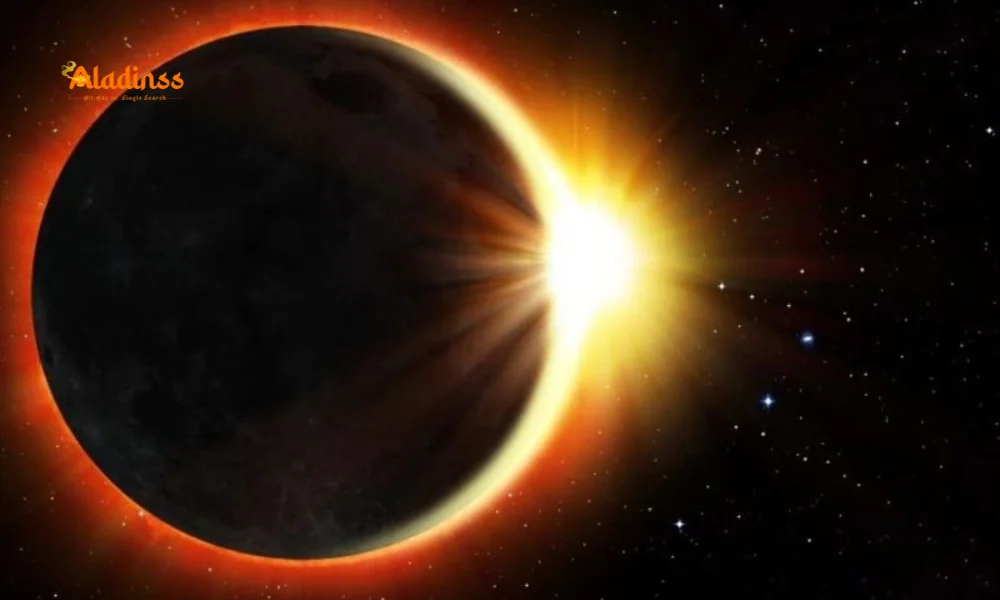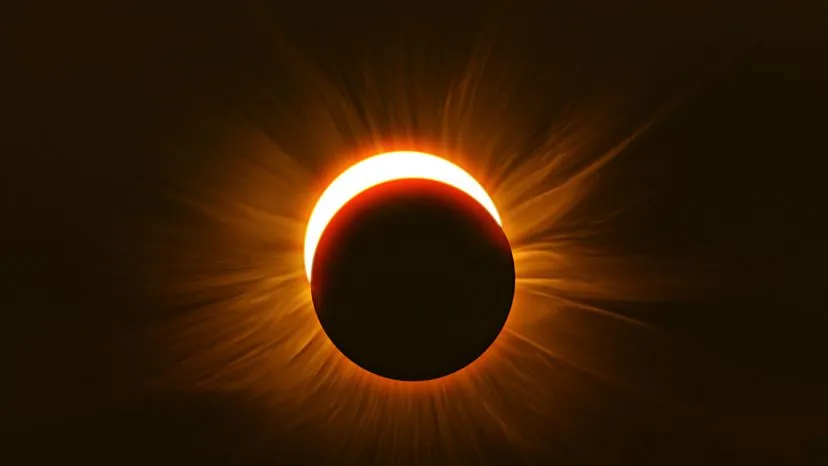Solar Eclipse September 21, 2025: Last Eclipse of Year to Plunge Earth into Darkness

Solar Eclipse September 21, 2025: Last Eclipse of Year to Plunge Earth into Darkness

Astronomy enthusiasts worldwide are preparing for the final celestial spectacle of 2025, as a partial solar eclipse is set to occur on September 21, 2025, marking the last eclipse event of the year. This astronomical phenomenon will create a dramatic darkening effect as the moon passes between Earth and the Sun, offering viewers in select regions an unforgettable experience of nature's cosmic dance.
The year 2025 has been particularly rich in eclipse activity, with astronomers having announced at the beginning of the year that a total of four eclipses would occur. These include two solar eclipses and two lunar eclipses, with the September 21st event serving as the grand finale to this celestial series. Earlier in the year, stargazers witnessed one solar eclipse and two lunar eclipses, including a spectacular total lunar eclipse on September 7th that painted the moon in dramatic blood-red hues.
Eclipse Timing and Duration Details
The solar eclipse on September 21, 2025, will begin during nighttime hours in India, starting at approximately 11:00 PM and continuing until 3:23 AM on September 22nd. This timing coincides with the new moon day, which falls on a Sunday and also corresponds with Sarva Pitru Amavasya, a significant day in the Hindu calendar dedicated to honoring ancestors.
The moment of greatest eclipse will occur at 19:41 UTC (Coordinated Universal Time), when the moon's shadow reaches its deepest point over a remote area of the South Pacific Ocean, positioned between New Zealand and Antarctica. This timing places the peak eclipse experience in the Southern Hemisphere, where daylight hours will provide optimal viewing conditions for those in the path of the eclipse.
The eclipse event adds special significance to the astronomical calendar as it occurs just one day before the commencement of Navratri, the nine-night festival celebrating the divine feminine in Hindu tradition. This alignment of celestial and cultural events creates a powerful convergence of natural phenomena and spiritual observance.
Visibility and Geographic Coverage
Unfortunately for Indian astronomy enthusiasts, this partial solar eclipse will not be visible from India due to its nighttime occurrence and geographic positioning. The eclipse path is specifically designed by celestial mechanics to favor the Southern Hemisphere, leaving viewers in India and most of Asia without direct observation opportunities.
The best places to see the eclipse will be in Antarctica and New Zealand, where daylight conditions during the eclipse will provide spectacular viewing opportunities. The eclipse will be visible across several key regions including the South Pacific Ocean, various parts of New Zealand including major cities like Christchurch and Wellington, portions of Australia, and several island territories in the Pacific.
Specific locations that will experience the eclipse include Norfolk Island, various islands in Polynesia and Melanesia, parts of the Southern Ocean, sections of the Atlantic Ocean, and portions of the Indian Ocean. Up to 80% coverage will be visible at the southernmost point of New Zealand and on Stewart Island, making these locations prime viewing destinations for eclipse enthusiasts willing to travel.
Less than 1% of the world's population will see this eclipse, making it an exclusive celestial event for those fortunate enough to be in the right geographic location at the right time. This rarity adds to the special nature of the September 21st eclipse, creating anticipation among the global astronomy community.
Scientific Significance and Eclipse Mechanics
This partial solar eclipse has a magnitude of 0.855, indicating that approximately 85.5% of the Sun's diameter will be obscured by the Moon at the point of maximum eclipse. This high magnitude classification places it among the more significant partial solar eclipses, offering viewers a substantial reduction in solar brightness and a noticeable darkening effect.
The eclipse occurs at the Moon's descending node of orbit, a technical detail that explains the specific geometric alignment required for this celestial event. During a solar eclipse, the Moon passes between the Earth and the Sun, casting a shadow on Earth's surface and temporarily blocking the Sun's light for observers within the shadow's path.
The partial nature of this eclipse means that viewers will observe the Moon taking what appears to be a "bite" out of the Sun, gradually covering more of the solar disk until reaching maximum coverage, then slowly revealing the Sun again. This process creates a crescent-shaped appearance of the Sun during the peak moments of the eclipse, offering photographers and observers dramatic visual opportunities.
For scientific researchers, this eclipse provides valuable opportunities to study solar corona behavior, atmospheric effects during partial solar obscuration, and the precise mechanics of lunar orbital patterns. Research teams in the visibility zone will likely conduct various measurements and observations to advance our understanding of solar-lunar interactions.
Eclipse Safety and Observation Guidelines
For those fortunate enough to be in the viewing zone, proper eclipse safety precautions are absolutely essential. Looking directly at the Sun during any phase of a solar eclipse without appropriate protective equipment can cause permanent eye damage or blindness. Standard sunglasses, even very dark ones, do not provide sufficient protection for direct solar observation.
Safe viewing methods include using certified eclipse glasses with ISO 12312-2 international safety standard approval, solar filters designed specifically for telescopes or binoculars, or indirect viewing methods such as pinhole projectors. These tools allow observers to experience the eclipse safely while protecting their vision from the Sun's intense radiation.
Photography enthusiasts planning to capture the eclipse should ensure their camera equipment includes proper solar filters to prevent damage to camera sensors and to achieve clear, well-exposed images of the eclipse progression. Long-exposure techniques and specialized astrophotography equipment can create stunning documentation of this rare celestial event.
Weather conditions will play a crucial role in viewing success, as cloud cover can completely obscruct the eclipse experience. Observers in the viewing zone should monitor weather forecasts closely and consider backup viewing locations if possible to maximize their chances of clear skies during the eclipse window.
Global Eclipse Pattern and 2025 Summary
The September 21st solar eclipse completes a remarkable year of celestial events for 2025. The year began with astronomers predicting exactly four eclipse events, a balanced combination of solar and lunar eclipses that have provided multiple opportunities for astronomical observation and scientific study throughout the year.
Earlier lunar eclipses in 2025 offered different viewing opportunities, including the blood moon event that occurred on September 7th, which was visible to many observers worldwide with the naked eye. These lunar eclipses provided excellent viewing experiences for regions where the upcoming solar eclipse will not be visible, balancing the year's eclipse accessibility across different geographic regions.
The pattern of eclipses follows predictable astronomical cycles, with eclipse seasons occurring approximately every six months when the Earth, Moon, and Sun achieve the proper geometric alignment. The September 2025 eclipse season concludes with this partial solar eclipse, completing the year's scheduled celestial events.
Future eclipse events are already being mapped by astronomers, with 2026 expected to bring its own series of solar and lunar eclipses in different geographic regions. These predictions allow astronomy enthusiasts, researchers, and eclipse chasers to plan their observational activities and travel arrangements well in advance.
Cultural and Spiritual Significance
The timing of this eclipse during Sarva Pitru Amavasya adds layers of cultural significance to the astronomical event. In Hindu tradition, Amavasya represents the new moon day, considered auspicious for spiritual practices, meditation, and connecting with ancestral wisdom. The coincidence of a solar eclipse with this sacred timing creates a powerful combination of natural and spiritual energies.
Many cultures throughout history have viewed solar eclipses as significant omens or spiritual events, often interpreting them as times of transformation, renewal, and cosmic intervention in earthly affairs. Modern understanding of eclipse mechanics doesn't diminish the sense of awe and wonder that these events continue to inspire in people worldwide.
The proximity to Navratri's beginning adds another dimension of spiritual significance, as the nine-night festival celebrates divine feminine energy and cosmic balance. This alignment suggests a powerful period for spiritual reflection, personal transformation, and connection with cosmic rhythms that govern both celestial movements and human consciousness.
For those unable to observe the eclipse directly, the spiritual and meditative aspects of eclipse energy can still be honored through contemplative practices, gratitude for cosmic order, and reflection on humanity's place within the vast astronomical systems that govern our solar system's dance.
Technology and Live Streaming Options
For the billions of people who cannot witness the September 21st eclipse in person, modern technology offers alternative viewing opportunities through live streaming services, observatory webcasts, and real-time astronomical broadcasting. Major space agencies, observatories, and astronomy organizations typically provide high-quality streams of significant eclipse events.
These digital viewing options allow global audiences to experience the eclipse through multiple camera angles, expert commentary, and educational content that enhances understanding of the astronomical phenomena occurring during the event. Social media platforms also facilitate sharing of eclipse experiences, creating virtual communities of eclipse observers worldwide.
Advanced telescope technology and satellite imagery can capture details of the eclipse that might not be visible to naked-eye observers, including subtle atmospheric effects, solar corona behavior during partial obscuration, and precise timing of eclipse phases across different geographic locations within the visibility zone.
Educational institutions worldwide often use major eclipse events as teaching opportunities, incorporating live streams into classroom activities and using the excitement of real-time astronomical events to inspire student interest in science, astronomy, and mathematics. This educational impact extends the reach of the eclipse far beyond its direct visibility zone.
As September 21, 2025 approaches, astronomy enthusiasts in the Southern Hemisphere are making final preparations for what promises to be a spectacular conclusion to 2025's eclipse series. While viewers in India and much of the Northern Hemisphere will need to wait for future eclipse opportunities, the anticipation and preparation surrounding this event demonstrate the enduring human fascination with celestial mechanics and our place within the cosmic dance of Earth, Moon, and Sun.
Comment / Reply From
No comments yet. Be the first to comment!








